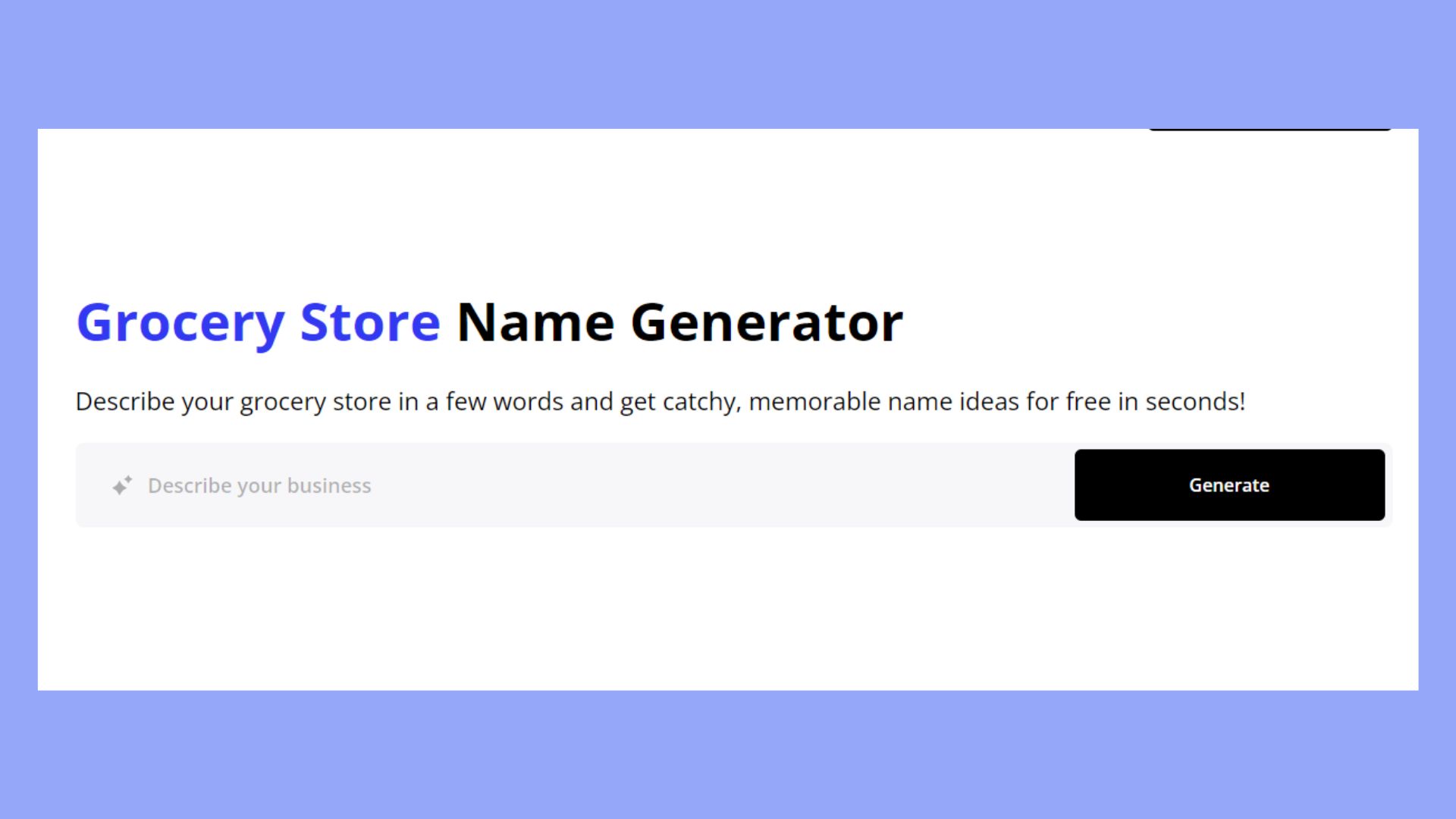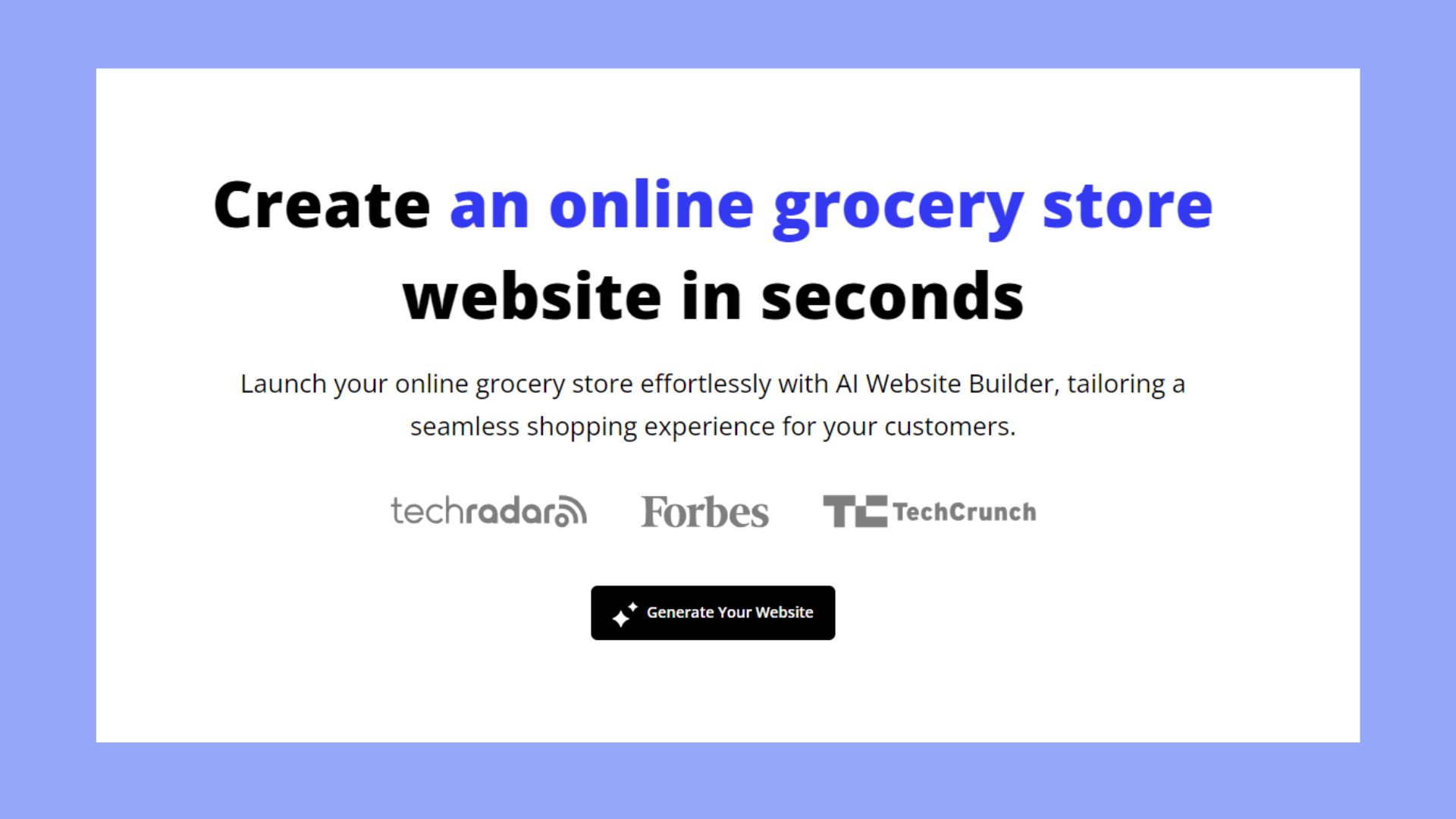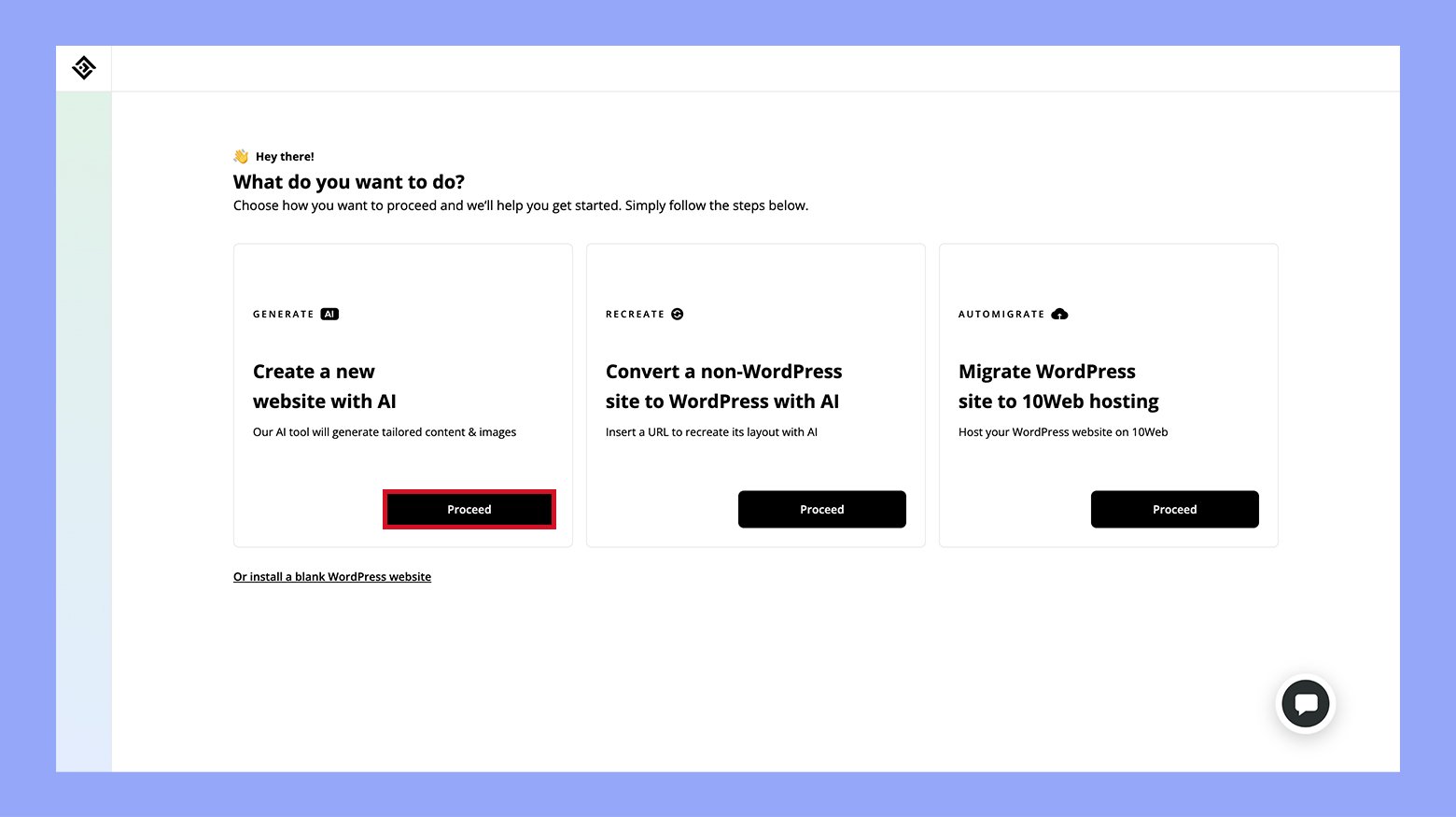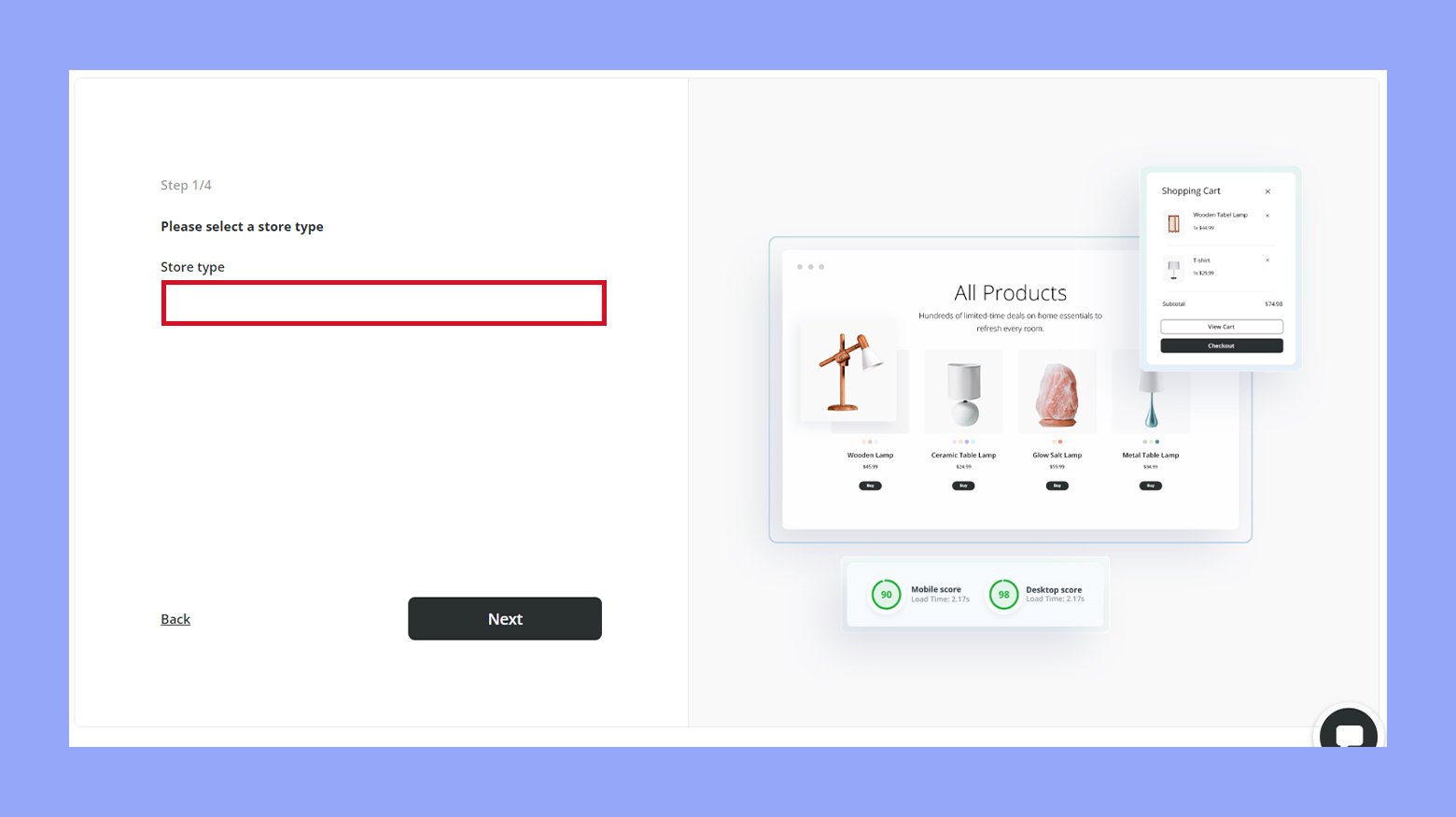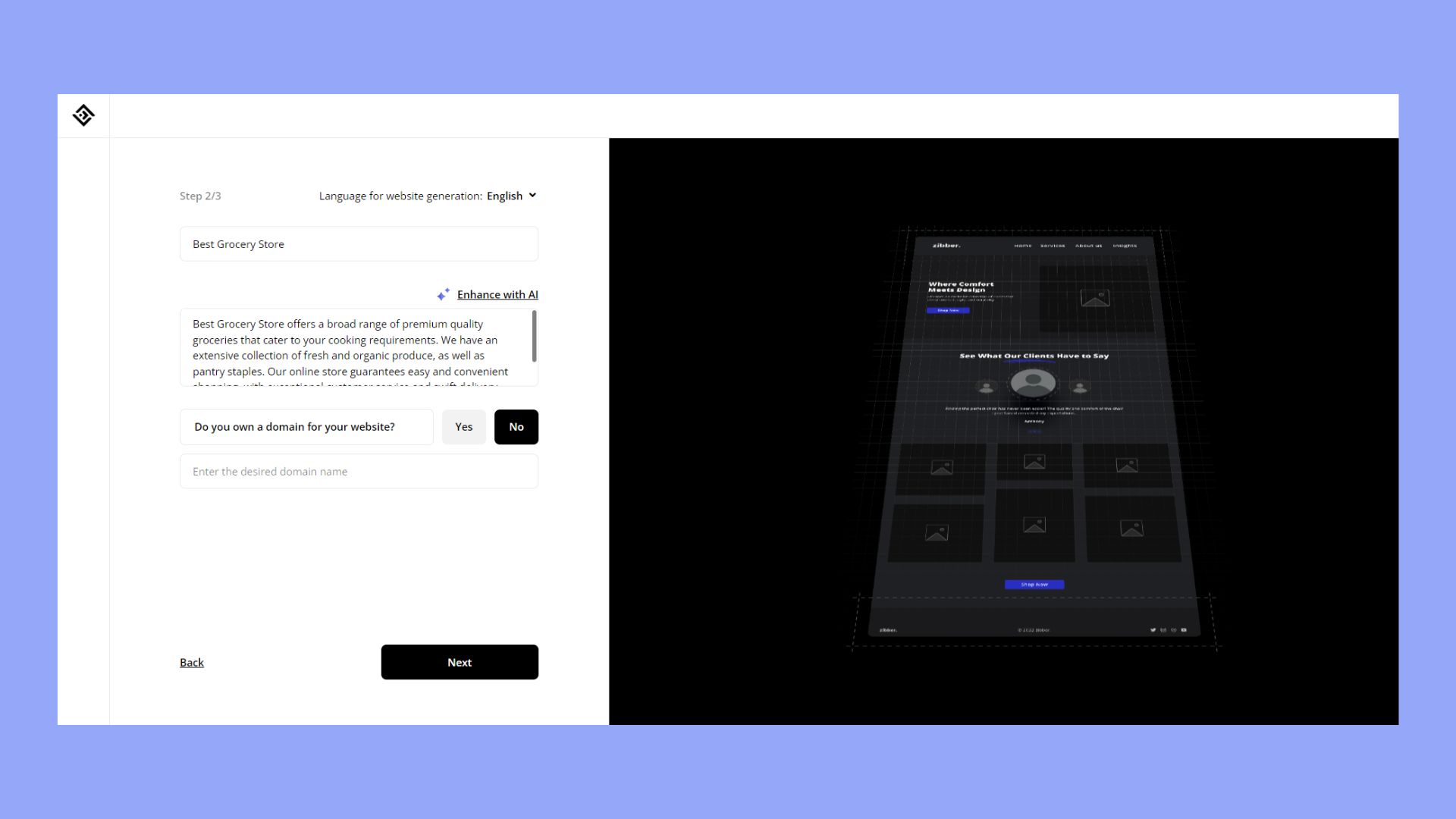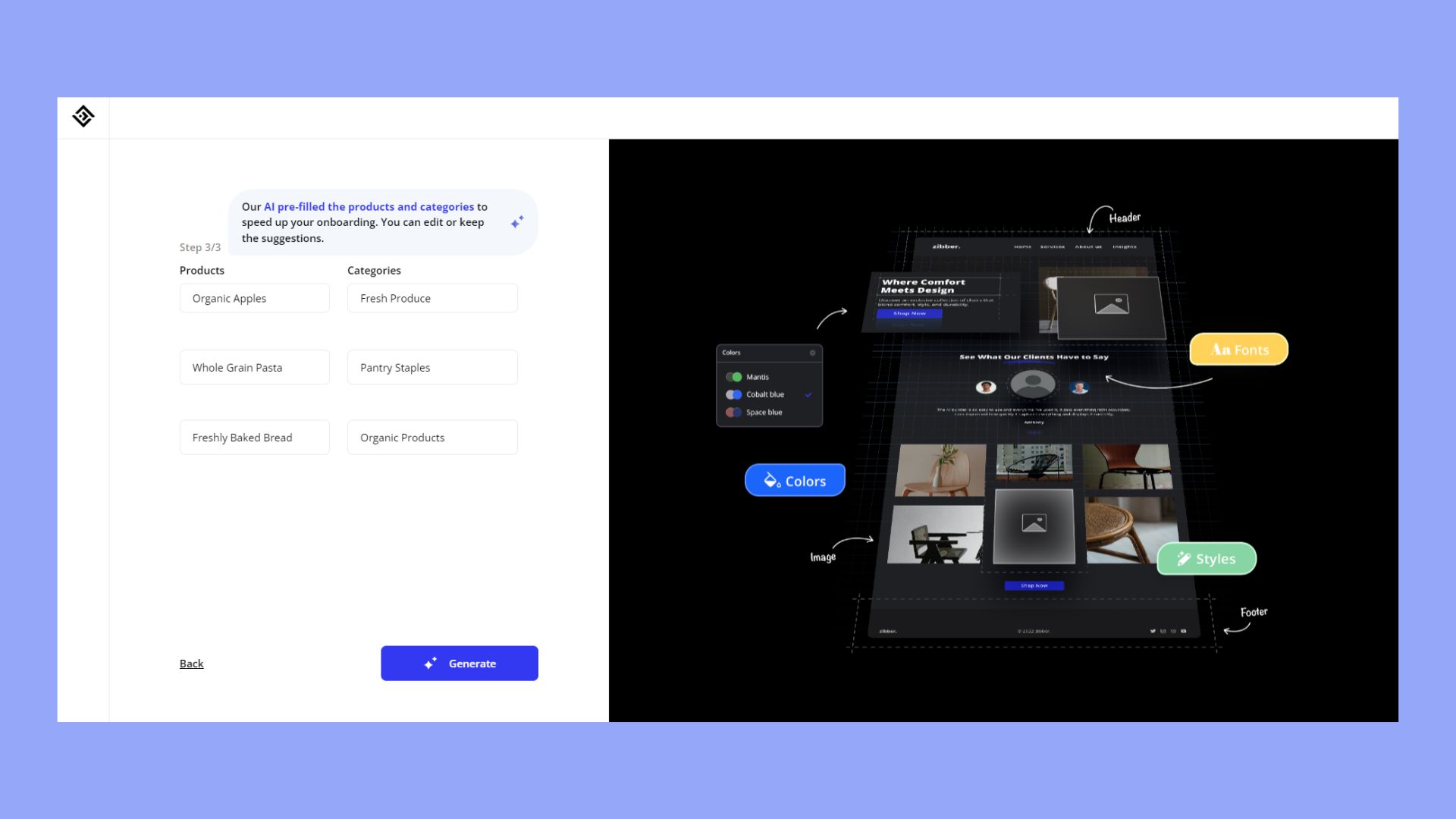The online grocery market is booming, offering an exciting opportunity for entrepreneurs to tap into this growing industry. With increasing consumer preference for online shopping, understanding how to sell groceries online is essential. The sector is rapidly evolving with trends like AI-enhanced customer experiences and diverse shopping options such as curbside pickup and instant delivery. By catering to markets like organic, gluten-free, and specialty ethnic foods, and staying informed about market trends, businesses can thrive and innovate in this dynamic landscape.
FAQ
How do I sell a product to a supermarket?
How to sell vegetables online?
How do small grocery stores make money?

Looking to sell online?
Create your custom online store in minutes with 10Web AI Ecommerce Website Builder and take your business online.
Current online grocery selling market
The online grocery market is growing quickly. More people are buying groceries online than ever before. This trend is expected to keep rising, which is a great opportunity for you to learn about market trends and start selling groceries online.
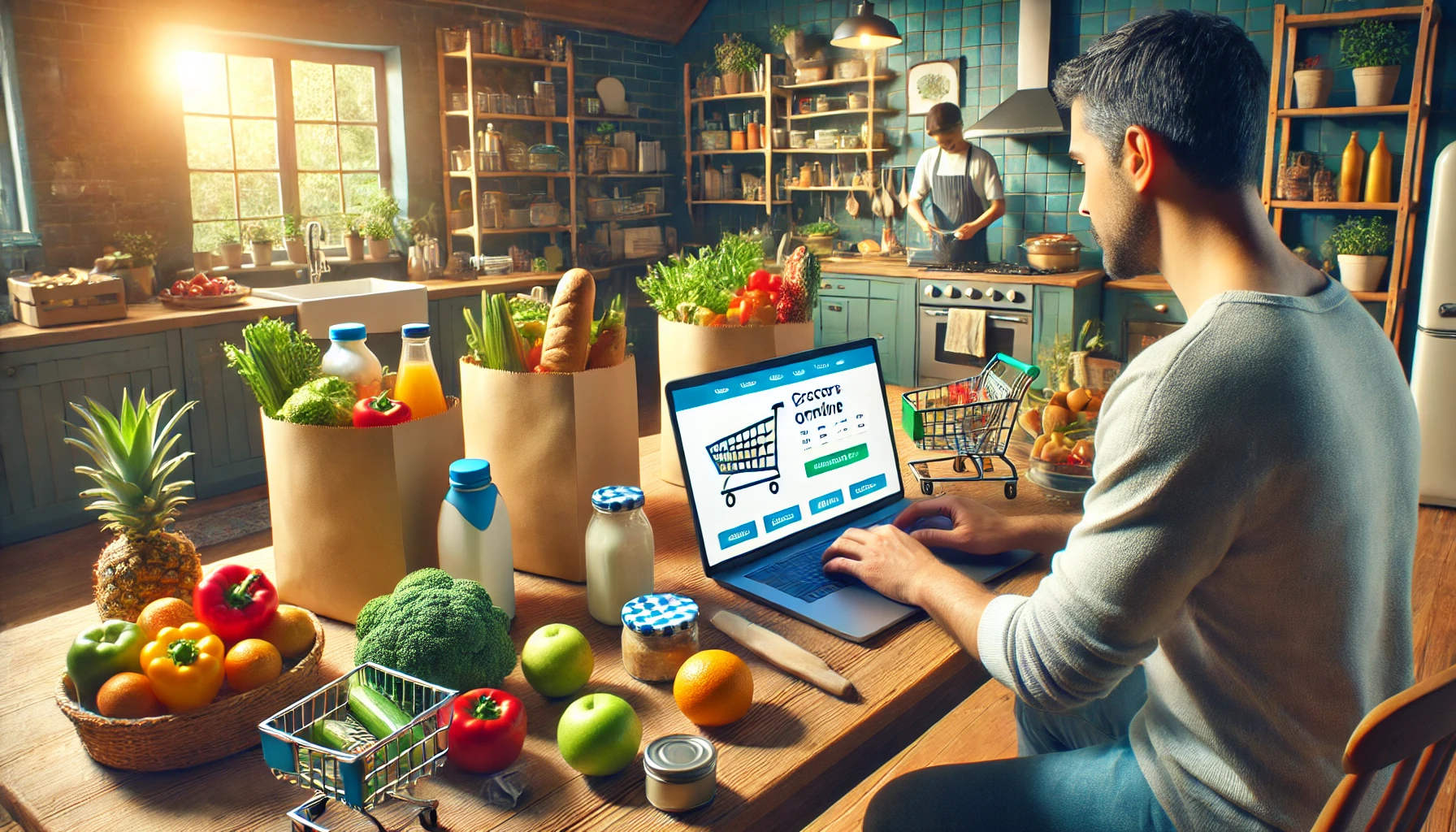
Trends within the market
The grocery ecommerce market is evolving rapidly. Understanding the latest trends can help you stay ahead of the competition.
Ecommerce growth
Grocery ecommerce is projected to grow significantly in the next few years. Executives expect penetration rates to more than double, reaching an average of 23% in the next three to five years.
AI in grocery shopping
Artificial Intelligence (AI) is transforming the industry. Traditional and generative AI are enhancing customer experiences through better omnichannel platforms and personalized interactions like push notifications.
Online and delivery options
The variety of grocery shopping options has expanded. Customers can choose from curbside pickup, home delivery, and even instant delivery services that promise fast delivery within 15 to 30 minutes.
Market share for online grocery
Online grocery sales are becoming a larger part of total grocery sales. In 2024, digital grocery sales are expected to make up 13.7% of the $1.601 trillion total US grocery sales.
Future projections
The online grocery market is expected to grow further. By 2025, it’s predicted to be a $253.89 billion market in the US. This growth highlights the increasing importance of online grocery shopping.
Financial projections of the market
When planning how to sell groceries online, understanding the financial landscape is key. The market for online grocery sales is expanding quickly, providing numerous opportunities for businesses.
Growth trends
According to recent data, online grocery sales are expected to reach $257.5 billion in 2024. This figure is projected to grow to $364 billion by 2026. The increasing shift towards online grocery shopping is led by a significant portion of American adults. In fact, 28% of them shop for groceries online at least once per month.
Market share
In leading countries, online grocery could capture 18-30% of the food-at-home market by 2030. Scheduled delivery will constitute the majority of these sales, while instant delivery (15-30 minute wait times) will also play a substantial role.
Financial planning tips
- Evaluate business: Take a close look at your current financial health.
- Business plan: Develop a solid business plan that details your growth strategy.
- Financial statements: Gather accurate and up-to-date financial records.
- Market assessment: Assess the market to determine an optimal asking price for your products.
Revenue breakdown
Online grocery businesses will benefit from understanding the percentage of people’s grocery budgets spent online. In 2022, Americans spent 20.5% of their grocery budgets online. With this upward trend, allocating resources efficiently can maximize your profitability.
Projections:
| Year | Projected sales ($B) |
| 2024 | 257.5 |
| 2025 | ~310 |
| 2026 | 364 |
Future opportunities
As ecommerce penetration is expected to double in the next three to five years, it’s an exciting time to tap into this market. Executives believe that there is significant upside potential in the online grocery sector, making it critical for you to stay informed and plan accordingly.
By staying on top of these financial projections, you can strategically position your online grocery business for success.
Specialized segments of the market
When learning how to sell groceries online, it’s important to understand the different specialized segments in the market. These segments can help you target specific customer needs and preferences.
- Organic groceries: Many consumers are becoming more health-conscious and prefer organic products. This segment includes fruits, vegetables, and even packaged goods that are free from pesticides or chemicals.
- Gluten-free products: With more people experiencing gluten sensitivities or opting for a gluten-free lifestyle, offering a range of gluten-free groceries can attract this growing market.
- Vegan and vegetarian items: There is a strong demand for vegan and vegetarian items. This includes meat substitutes, dairy-free products, and plant-based snacks.
- Specialty ethnic foods: Targeting specific cultural foods can help you reach diverse customer groups. Include groceries from various cuisines like Italian, Mexican, or Asian.
- Gourmet items: Some customers look for gourmet or high-end products. This segment includes premium coffee, rare spices, and artisanal cheeses.
- Subscription or meal kits: Offer subscription services or meal kits for convenience. This can include pre-measured ingredients for specific recipes, making it easier for customers to cook at home.
Understanding these specialized segments and catering to them can give you a competitive edge. By focusing on specific needs, you can better serve your customers and boost your online grocery sales.

Looking to sell online?
Create your custom online store in minutes with 10Web AI Ecommerce Website Builder and take your business online.
How to sell groceries online
Selling groceries online can be highly profitable and a great way to reach a wide audience. Start by establishing your brand, planning your business, and choosing the right platform. Here are the essential steps to successfully sell groceries online.
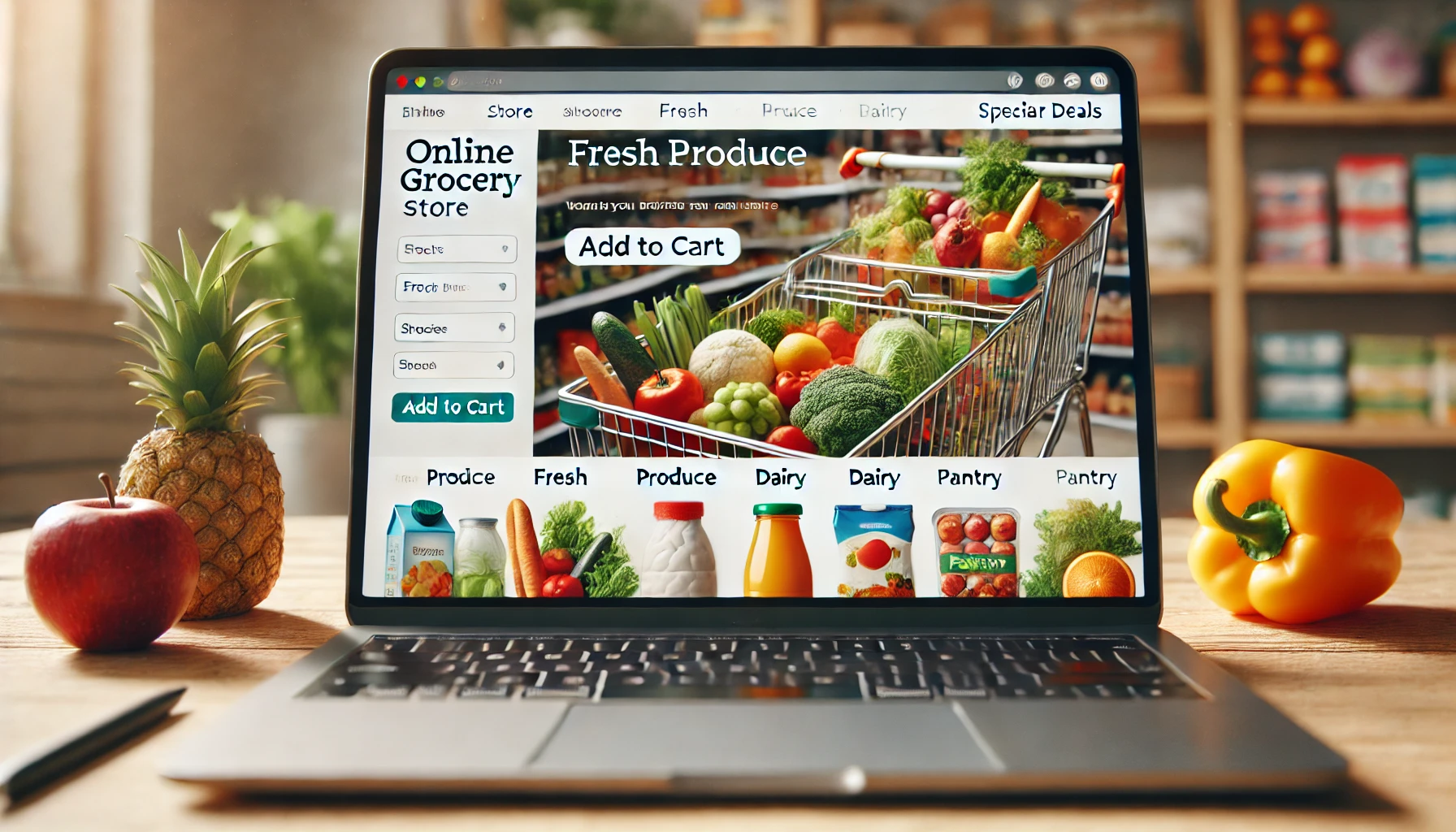
Brand creation
Creating a strong brand is essential when selling groceries online. Your brand helps you stand out and connects you with your customers.
- Define your brand: Decide what makes your business unique. Think about your values, mission, and what you want customers to feel when they see your brand. Are you focused on local produce, organic items, or convenience?
- Choose a name and logo: Pick a name that represents your brand and is easy to remember. You can use 10Web’s Business Name Generator for that. Then use an online logo maker to create a visual that matches your brand’s identity. Keep it simple and clear.

- Develop your brand’s voice: How you speak to your customers is important. Decide if your tone will be formal, friendly, or fun. Keep it consistent in all your communications like social media, email, and product descriptions.
- Design your packaging: Your packaging should reflect your brand’s image. It should be eye-catching and practical. Make sure it protects the groceries during delivery. Adding your logo and brand colors can make a big difference.
- Create a professional online store: Set up your store with a theme that fits your brand. Use high-quality photos and clear descriptions. Highlight your brand values to attract customers who share the same beliefs.
- Build a strong online presence: Use social media to share your story and connect with your customers. Post regularly and interact with your followers. Having a blog on your website can also help you engage with your audience.
- Pay attention to details: From your website design to your customer service, every detail counts. Make sure the user experience is smooth and enjoyable. Little touches, like thank-you notes in orders, can create loyal customers.
Establishing your brand is a key step in how to sell grocery online. A well-crafted brand helps you attract and retain customers.
Vision
Starting an online grocery business can be both exciting and challenging. Having a clear vision helps you set goals and guide your efforts.
Identify your target market
To refine your vision, start by identifying your target customers. Think about who needs your service the most. Are they busy professionals, families, or seniors? Understanding your market helps shape your business strategies.
Define your goals
Set specific, measurable, achievable, relevant, and time-bound (SMART) goals. Examples include reaching a certain number of customers or achieving monthly sales targets. Clear goals keep you focused and motivated.
Create a unique selling proposition (USP)
Your USP makes your business stand out. It could be offering organic products, fast delivery, or competitive pricing. Knowing your USP helps attract your target audience.
Plan for growth
Think about how your business can grow over time. Will you expand your product range, improve delivery services, or enter new markets? Having a growth plan ensures long-term success.
Use a mix of sales channels
Consider using various sales channels to reach more customers. This can include your website, mobile app, or partnering with existing platforms. Diversifying your channels increases your visibility.
Build a strong brand
Your brand identity sets you apart from competitors. Use a memorable logo, catchy tagline, and consistent messaging. A strong brand fosters customer loyalty and trust.
By focusing on these aspects, you’ll establish a clear vision and a strong foundation for your online grocery business. This vision will guide you on how to sell grocery online effectively and sustainably.
Market research
To sell groceries online, market research is essential. It helps you understand your potential customers, identify market trends, and find your unique selling point. Here’s how to gather valuable information:
Steps for conducting market research
- Identify your customers: Determine the ideal customers for your online grocery store. Consider their age, location, income, shopping habits, and preferences.
- Analyze the competition: Look at other online grocery stores. Identify their strengths, weaknesses, and areas where you can provide something better.
- Study market trends: Understand the latest trends in the online grocery market. This includes popular products, seasonal items, and purchasing habits.
- Conduct surveys and questionnaires: Reach out to potential customers using surveys. Ask about their shopping preferences, challenges, and what they look for in an online grocery service.
- Use data analytics tools: Utilize tools like Google Analytics to track website traffic and understand customer behavior on your platform.
- Monitor social media: Pay attention to social media channels to see what customers are saying about online grocery shopping. Follow relevant hashtags and participate in discussions to gain insights.
- Evaluate market demand: Assess the demand for various grocery items by monitoring search trends using tools like Google Trends.
- Segment your market: Divide your potential customer base into segments based on common characteristics. This will help you tailor your marketing efforts more effectively.
Example of information to include in your research:
| Aspect | Example findings |
| Customer preferences | Organic produce, quick delivery, discounts |
| Competitor strengths | Wide product range, user-friendly website |
| Market trends | Increase in demand for vegan products |
| Survey results | 60% prefer mobile-friendly ordering |
By following these steps, you can gather the insights needed to effectively understand how to sell groceries online and create a successful business strategy.
Writing a business plan
Creating a solid business plan is crucial for your online grocery business. A clear, well-written plan helps you stay organized and attract investors.
- Executive summary: Start with an executive summary. This is a brief overview of your business, its goals, and how you plan to achieve them.
- Identify your target market: Identify the people most likely to buy from you. Understand their needs, demographics, and shopping habits.
- Market research: Conduct thorough market research. Analyze competitors and market trends. This helps you find opportunities and avoid common pitfalls.
- Unique selling proposition (USP): Define what makes your online grocery store special. Your USP differentiates you from competitors.
- Marketing and sales strategies: Outline your marketing plan. Include strategies for social media, email marketing, SEO, and other channels. Detail how you’ll attract and retain customers.
- Operational plan: Describe the day-to-day operations. Include information on inventory management, supply chain logistics, and customer service.
- Financial plan and fundraising: Create a detailed financial plan. Include projections for revenue, expenses, and profitability. List potential funding sources if needed.
- Legal considerations: Address legal requirements. This could be business licenses, health regulations, and contracts with suppliers.
- Appendices: Include additional information in the appendices. This might be market research data, resumes of key team members, or any other relevant documents.
Following these steps will help you build a comprehensive business plan for how to sell groceries online.
Best platforms for selling grocery online
When you start thinking about how to sell groceries online, picking the right platform is crucial. Here are some of the best platforms that can help you reach your customers:
- WooCommerce: If you prefer using WordPress, WooCommerce is a great choice. It is flexible and can be customized with various plugins to fit your grocery store needs.
- BigCommerce: BigCommerce offers robust features like perishable goods management and batch tracking. This platform supports scalability, making it suitable for growing businesses.
- Your own website: Creating your own website allows for complete control over your online store. You can customize it to perfectly fit your brand and inventory needs, offering a unique shopping experience for your customers.
- Magento: Magento is known for its powerful features and customization options. It’s ideal for larger businesses looking to expand. It offers a wide range of grocery-specific features and supports complex inventory systems.
Choosing the right platform depends on your business size, goals, and technical skills. Consider these options to set up your online grocery store effectively.
Choose a sales platform
When learning how to sell groceries online, choosing the right sales platform is crucial. The platform you pick will shape your online store’s look, feel, and functionality. Here’s how to choose the best one:
- Evaluate your needs: Think about what you need. Do you want local delivery, curbside pickup, secure payments, or inventory management?
- Research platforms: Look into platforms like WooCommerce and BigCommerce. Each has its advantages and features for selling groceries.
- Consider user experience: Choose a platform that is user-friendly. Your customers should find it easy to navigate and place orders.
- Check customization options: Some platforms offer customizable templates. This lets you design your store to fit your brand and make shopping enjoyable.
- Look for secure payment gateways: Ensure that the platform supports secure payment methods such as credit cards, PayPal, and more.
- Inventory management: A good platform helps you keep track of stock levels. This prevents overselling products you don’t have.
- Scalability: Pick a platform that can grow with your business. It should handle an increase in products, sales, and traffic with ease.
By carefully picking a platform, you’ll set a strong foundation for your online grocery store’s success.
Creating an online grocery store with 10Web
If you’re wondering how to sell groceries online, creating a website with 10Web is a great option.
Step-by-Step Instructions
- Access 10Web’s website: Visit the 10Web site and click on Generate Your Website.


- Create a new AI-powered site: Choose the option for an online store.

- Describe your business: Mention your business type and provide a brief description.


- Generate the website: Enter details for your first three services and categories. AI will pre-fill them for you, you can edit or keep the suggestions. When done, click Generate, and wait for 10Web to generate your site.

The result will be a ready and functional website, which you can customize to your needs and your business specifics. With 10Web you can swiftly launch a professional online worksheets store without any coding, taking advantage of AI tools, and more, all at an affordable price.
Features of 10Web for grocery stores
- Product catalogs: Easily list your grocery items with pictures and descriptions.
- Shopping cart: Customers can add multiple items before checking out.
- Secure checkout: Payment processing is safe and secure.
Support and community
- 24/7 live chat: Get help whenever you need it.
- Slack channels: Join groups for more detailed discussions.
- Community forums: Share insights and get advice from other users.
Building a website with 10Web is straightforward and provides all the tools you need to start selling groceries online.

Looking to sell online?
Create your custom online store in minutes with 10Web AI Ecommerce Website Builder and take your business online.
Marketing and customer engagement
To effectively sell groceries online, focus on leveraging social media platforms and building a strong mailing list. These strategies will help you reach a larger audience and keep your customers engaged.

Diverse methods to effectively connect with your audience
Connecting with a diverse audience is crucial when learning how to sell groceries online. Use these methods to engage and resonate with different customer groups.
- Tailor your messages: Understand the cultural backgrounds of your customers. Customize messages to reflect their values and preferences. This makes your communication more relatable.
- Use social media effectively: Engage with your audience on platforms like Facebook and Instagram. Share relevant content, reply to comments, and use hashtags that resonate with your target market.
- Email marketing campaigns: Send personalized emails with special offers and updates. Segment your email list to cater to different customer groups. Make the emails visually appealing and include a call-to-action like Shop Now.
- Invest in SEO: Optimize your website for search engines. Use keywords that your audience searches for, like fresh produce or organic groceries. This helps to increase your online visibility.
- Community engagement: Participate in local events and support community activities. This builds trust and shows that you care about your customers. Consider sponsoring local sports teams or festivals.
| Method | Description |
| Tailor your messages | Customize communication to fit cultural values and preferences |
| Social media | Engage on platforms, share content, respond to comments |
| Email marketing | Send personalized, visually appealing emails with special offers |
| SEO | Optimize website with relevant keywords for better visibility |
| Community engagement | Participate in local events and support community activities |
Each of these methods can help create meaningful connections with your audience, making your online grocery store more successful.
Content marketing
Content marketing is key when learning how to sell groceries online. It helps attract and retain your target audience by providing valuable information. This builds trust and encourages purchases.
Create valuable content
Creating content that offers value is crucial. Write blog posts about tips for healthy eating, meal prep ideas, or recipes using your products.
Utilize social media
Share your content on social media platforms. Use Facebook and Instagram to reach a wide audience. Post regularly to keep your customers engaged.
Email newsletters
Send out weekly or monthly newsletters. Include updates on new products, special offers, and useful articles. This keeps your customers informed and interested.
Engage with your audience
Reply to comments and messages. This interaction shows you care about your customers and builds a loyal following.
Use visuals
Pictures and videos make your content more appealing. Share high-quality images of your products and create short recipe videos to catch your audience’s eye.
Collaborate with influencers
Partner with food bloggers or social media influencers. They can help promote your grocery store to their followers, increasing your reach.
Monitor and adjust
Keep track of your content’s performance. Use tools like Google Analytics to see what works best and adjust your strategy accordingly.
By focusing on content marketing, you’ll attract more customers and build a strong online presence for your grocery business.
Social media
To effectively sell groceries online, leveraging social media is crucial. It helps you reach a larger audience and engage with your customers. Here’s how to use social media to sell grocery online:
- Choose the right platforms: Focus on popular platforms. They have large user bases and offer good tools for promoting products.
- Create engaging content: Post pictures, videos, and stories of your products. Show how they can be used in meals and share recipes. Interactive content increases engagement.
- Use hashtags: Employ relevant hashtags to increase the reach of your posts. For example, #freshproduce, #organic, or #grocerydelivery. Hashtags help new customers find your products.
- Run promotions and contests: Offer discounts, special deals, or host contests to attract more followers and boost sales. Make sure to promote these offers widely on your social media.
- Utilize ads: Use paid advertising to target specific demographics. Platforms like Facebook and Instagram let you create targeted ad campaigns to reach the right customers.
- Engage with your audience: Respond to comments, questions, and messages promptly. Building a relationship with your customers can increase loyalty and trust.
- Share customer reviews: Post positive reviews and testimonials from satisfied customers. Authentic reviews build credibility and encourage others to buy from you.
- Collaborate with influencers: Partnering with social media influencers can help you reach a broader audience. They can promote your products to their followers, boosting your visibility.
- Track performance: Monitor which posts get the most engagement and adjust your strategy accordingly. Use insights and analytics tools provided by social media platforms.
By following these steps, you can effectively use social media to enhance your grocery business and reach more customers online.
Interactive content and blog posts
Creating interactive content and blog posts can attract and engage customers when selling groceries online. This is a great way to inform buyers, build trust, and drive sales.
Types of Interactive Content
- Quizzes: Create quizzes to help customers decide what products suit their needs.
- Surveys: Get feedback on what products they want.
- Live demos: Host live cooking classes to show how to use your products.
Why blog posts matter
Blog posts are key to reaching your customers. They improve your website’s search engine ranking and help establish your brand as an authority. Regularly update your blog with useful and interesting information.
Content ideas for blogs
- Recipes: Share simple, delicious recipes using your grocery products.
- Health tips: Offer advice on healthy eating and nutrition.
- Product highlights: Write detailed posts about specific products.
Step-by-step guide for creating interactive content and blogs
- Identify your audience: Know who you are targeting.
- Plan your content: Decide on topics and the type of content.
- Create high-quality content: Ensure your posts are well-written and engaging. Use images, videos, and infographics.
- Promote your content: Share on social media, in newsletters, and other platforms.
- Engage with your audience: Reply to comments and questions to build a community.
By using interactive content and regularly posting blogs, you can attract more customers and keep them engaged. This is an important part of learning how to sell grocery online.
Conclusion
In conclusion, learning how to sell grocery online is essential for capitalizing on the booming online grocery market. By understanding market trends, leveraging AI, and targeting niche markets like organic and gluten-free products, businesses can thrive. Effective marketing, a strong brand, and the right ecommerce platform are key to success. The opportunities are vast, making this an exciting time to innovate and grow in the online grocery sector.


